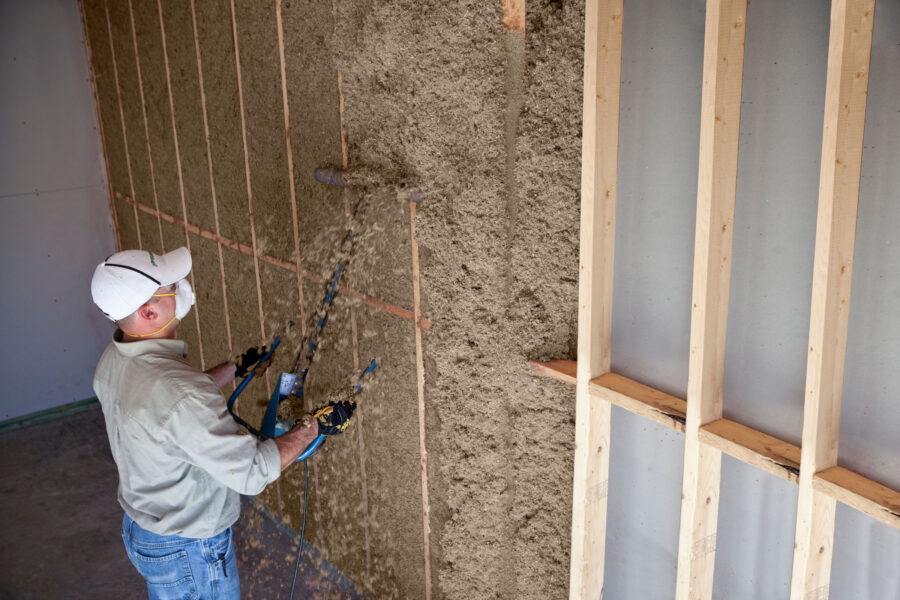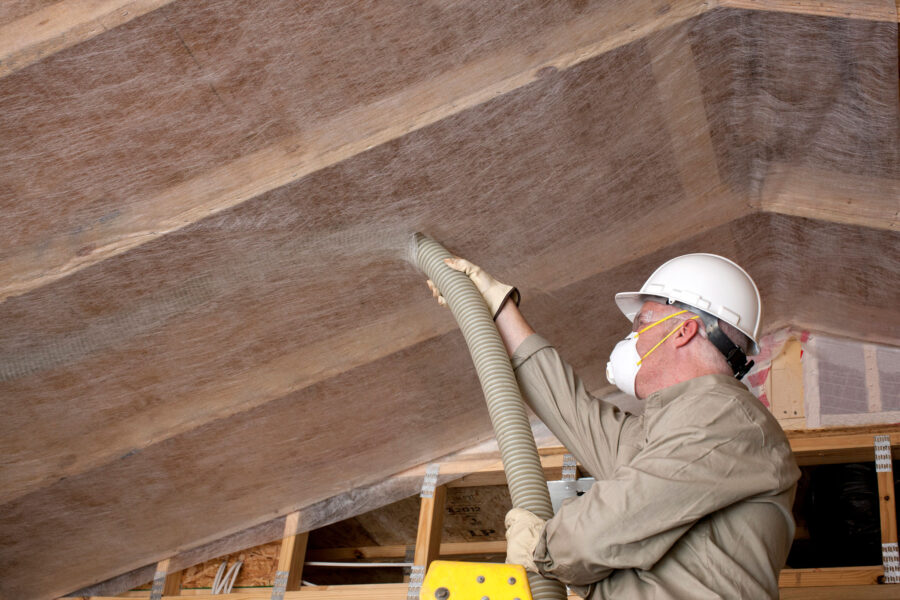Story at a glance:
- Cellulose insulation is a natural product that locks in carbon and is resistant to airflow, improving ACH compliance and reducing VOCs.
- Greenfiber’s SANCTUARY line is a densely packed cellulose insulation that aids in sound mitigation throughout the building.
- The blown-in or spray-applied method ensures that every gap is filled, providing a more consistent installation.
Air Changes Per Hour (ACH) is a principal factor in indoor air quality, energy efficiency, and building ventilation design, which can help builders and contractors meet IECC standards. Adequate insulation can be key in regulating ACH through proper air infiltration, but standard insulations like fiberglass can leave gaps, and polyurethane foams, while effective at sealing these gaps, can emit harmful VOCs.
While varying options of insulation materials are available, Greenfiber’s SANCTUARY® line of cellulose insulation is a natural product that produces low to no VOCs and is effective in reducing air infiltration within a home. This reduction not only improves ACH compliance but also aids in sound mitigation, which adds to the overall comfort of its residents.
Enhanced Comfort and IAQ

Photo courtesy of Greenfiber
ACH is a crucial component when it comes to the comfort of a home. Excessive air leakage can cause excess cooling or heating, which can make HVAC units work harder as well as put stress on the inhabitants’ bodies as they must adjust to the varying temperatures.
While all insulations work to mitigate this heating and cooling, Greenfiber’s cellulose insulation fills the entire wall cavity, which makes it inherently resistant to airflow, aiding in a reduction of heating and cooling costs by up to 15%. In a blower door test comparison, Greenfiber’s spray-applied cellulose outperformed both inset and face-stapled kraft-faced fiberglass batts by a margin average of 2 cubic feet per minute in regards to airflow resistance.
“Our insulation is a Grade 1 install every single time. Especially when applying the wall spray, the installer is shooting and spraying that wall, filling the entire cavity with insulation,” says Luke Shortridge, market development manager for Greenfiber’s Southwest region.
With some competitors’ products, though, he says warm and cold air can get in. “Our insulation fills each cavity side-to-side and top-to-bottom, without gaps or voids around obstructions like blocking or bridging, and it’s installed tightly around wiring or electrical boxes in the cavity. We have six points of contact.”
Grade 1 installation works to reduce air infiltration, which can also aid in preventing harmful outside pollutants from entering the home, helping to increase IAQ. Unfortunately pollutants can come from both outside a building and within. Harmful VOCs can originate from inside a home from sources like paint, wood preservatives, and other building materials—insulation included. Greenfiber’s SANCTUARY insulation consists of paper fiber and negative embodied carbon and has no toxic emissions.
Sound Performance

Photo courtesy of Greenfiber
The reduction in airflow provided by Greenfiber’s cellulose insulation does more than just aid in temperature control and pollution mitigation; it also plays an important part in sound moderation. By being blown or sprayed-in, cellulose insulation will provide a custom fit around wiring and plumbing, forming a barrier between the source of noise and the adjacent areas. When installed it becomes an effective, high-quality, sound-blocking material that absorbs noise, reducing the power of sound by 60%.
Installing SANCTUARY in an attic will help to reduce overhead noises, while installing it within exterior and interior walls helps to reduce both noise from outside and within the home. While all insulation materials are known to aid in sound mitigation, cellulose fibers have a high Sound Transmission Class rating that has proven to outclass polyurethane spray foams and, in some cases, fiberglass batts that were specifically designed for sound control, Shortridge says.
“That’s the beauty of the product. External sounds like your neighbor having a party or working on the lawn will be mitigated when a house has all the exterior walls done,” Shortridge says. “And then the interior walls are for the inhabitants to be able to do what they want in their separate areas of the room.”
Construction Benefits

Photo courtesy of Greenfiber
For contractors and homebuilders Greenfiber’s SANCTUARY line can be an alternative option for insulation or used in conjunction with traditional or other forms of insulation. This is due to the spray-applied/blown-in install method, which can be used to install over existing insulation, saving time by not having to cut and fit each gap and hard to reach area.
According to the Building Performance Institute’s (BPI) BPI-104 Envelope Professional Standard for Dense-pack Wall Insulation Application, dense-packed cellulose at 3.5 pcf qualifies as an air barrier. The same study requires blown fiberglass, mineral wool, and spray foam to be installed in an enclosed cavity with a BPI-102 approved ASTM test, validating an air permeance value of less than 3.5 cfm per square foot at 50 Pascals, Shortridge says.
Cellulose insulation is also a formidable energy-efficient and sustainable building material since it is a natural product that doesn’t emit VOCs and has the lowest embodied carbon of any other broadly available insulation product, Shortridge says. Its typical R-Value is 3.2 to 3.8, and since it is made from recycled plant material, its manufacturing process makes it more affordable with less energy consumption.
“All this combined with its Grade 1 installation and ability to reduce air infiltration makes it an excellent option that can help builders and contractors meet IECC standards, which can further aid in receiving 45L tax credits,” he says.

